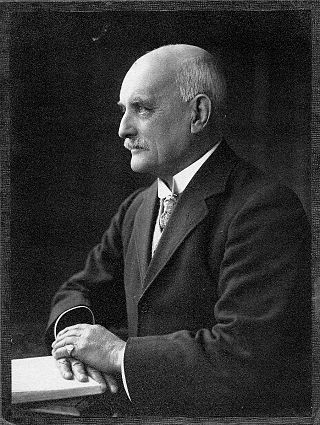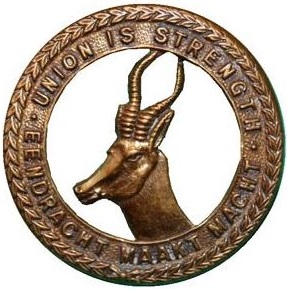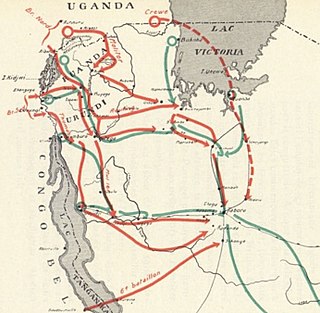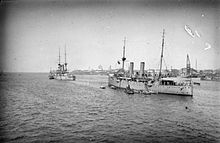
German East Africa was a German colony in the African Great Lakes region, which included present-day Burundi, Rwanda, the Tanzania mainland, and the Kionga Triangle, a small region later incorporated into Mozambique. GEA's area was 994,996 km2 (384,170 sq mi), which was nearly three times the area of present-day Germany and almost double the area of metropolitan Germany at the time.

Paul Emil von Lettow-Vorbeck, popularly known as the Lion of Africa, was a general in the Imperial German Army and the commander of its forces in the German East Africa campaign. For four years, with a force of about 14,000, he held in check a much larger force of 300,000 British, Indian, Belgian, and Portuguese troops. He is known for never being defeated or captured in battle.

Schutztruppe was the official name of the colonial troops in the African territories of the German colonial empire from the late 19th century to 1918. Similar to other colonial armies, the Schutztruppen consisted of volunteer European commissioned and non-commissioned officers, medical and veterinary officers. Most enlisted ranks were recruited from indigenous communities within the German colonies or from elsewhere in Africa.

The Battle of Jassin was a World War I battle that took place on 18– 19 January 1915 at Jassin on the German East African side of the border with British East Africa between a German Schutztruppe force and British and Indian troops. Jassin had been occupied by the British in order to secure the border between British East Africa and German territory, but was weakly defended by a garrison of four companies of Indian troops, commanded by Colonel Raghbir Singh and numbering a little over 300 men. Colonel Singh was killed during the battle.

The Battle of Kilimanjaro at Longido took place in German East Africa in November 1914 and was an early skirmish during the East African Campaign of the First World War.

Brigadier-General Arthur Edward Aitken was a British military commander.

The African theatre of the First World War comprises campaigns in North Africa instigated by the German and Ottoman empires, local rebellions against European colonial rule and Allied campaigns against the German colonies of Kamerun, Togoland, German South West Africa, and German East Africa. The campaigns were fought by German Schutztruppe, local resistance movements and forces of the British Empire, France, Italy, Belgium, and Portugal.

The East African campaign in World War I was a series of battles and guerrilla actions, which started in German East Africa (GEA) and spread to portions of Mozambique, Rhodesia, British East Africa, the Uganda, and the Belgian Congo. The campaign all but ended in German East Africa in November 1917 when the Germans entered Mozambique and continued the campaign living off Portuguese supplies.

The South African Overseas Expeditionary Force (SAOEF) was a volunteer military organisation in World War I.

The Battle of Salaita Hill was the first large-scale engagement of the East African Campaign of the First World War to involve British, Indian, Rhodesian, and South African troops. The battle took place on February 12, 1916, as part of the three-pronged offensive into German East Africa launched by General Jan Smuts, who had been given overall command of the Allied forces in the region.
The Battle of Kondoa Irangi took place during the East African Campaign of World War I.
The Battle of Kisaki was a confrontation between German and South Africa forces near the town of Kisaki, German East Africa, on 7–11 September 1916.

The Battle of Mahiwa between German and British Imperial forces was fought during the East African Campaign of World War I, when South African and Nigerian troops under Lieutenant General Jacob van Deventer engaged a column under German General Paul Emil von Lettow-Vorbeck, at Mahiwa in German East Africa. The Germans inflicted substantial casualties upon Van Deventer's army, forcing it to withdraw. However, the Germans lost a large percentage of their forces, and were ultimately forced to withdraw from their positions and continue their guerrilla war. The battle was noted by the British Official History as the "most disastrous day for the Nigerian Army since the formation of the force" and was called "the most savage battle in the history of African conflict-not excluding Omdurman or any engagement of the Boer War."

The Battle of Ngomano or Negomano was fought between Germany and Portugal during the East African Campaign of World War I. A force of Germans and Askaris under Paul Emil von Lettow-Vorbeck had recently won a costly victory against the British at the Battle of Mahiwa, in present-day Tanzania and ran very short of food and other supplies. As a consequence, the Germans invaded Portuguese East Africa to the south, both to supply themselves with captured Portuguese materiel and escape superior British forces to the north.

Ruga-Ruga were irregular troops in Eastern Africa, often deployed by western colonial forces. They often served as mercenaries or local auxiliaries alongside the regular Askari, professional soldiers who were often hired in other regions of Africa. While the latter were trained by officers of the European colonial powers in Africa, the Ruga-Ruga were mostly hired from tribal warriors during times of conflict.

The Battle of Lioma was fought between the German Empire and British Empire during the East African Campaign of World War I. Having successfully evaded the Allies since late 1917, the German Schutztruppe under Paul von Lettow-Vorbeck waged a guerilla campaign in Portuguese East Africa, attacking and raiding settlements as well as forts in the search of supplies while inflicting as much damage as possible on the Allies. All the while, the Schutztruppe was chased by the British King's African Rifles, which finally cornered the Germans at the village of Lioma on 30–31 August 1918. Led by George Giffard, the British forces almost managed to encircle and destroy the Schutztruppe, but in the end the Germans broke out and successfully retreated. Although greatly weakened by the fighting at Lioma, the Schutztruppe was thus able to remain active until the end of the war.

The Tabora Offensive was an Anglo-Belgian offensive into German East Africa, which ended with the Battle of Tabora in the north-west of German East Africa, it was part of the East African Campaign in World War I. The forces of the Belgian Congo crossed the border with German East Africa and captured the port city of Kigoma and the city of Tabora. In August a smaller Lake Force under the command of the South African brigadier general Crewe, launched a parallel attack from Uganda, also aimed at taking Tabora. The completion of the Tabora Offensive not only left much of the Ruanda-Urundi territory under Belgian military occupation but gave the Allies control of the important Tanganjikabahn railway.

Tom von Prince was a military officer and plantation owner in German East Africa. He most notably, as a captain in the Schutztruppe, led the first action by German forces in East Africa during World War I by seizing Taveta on 15 August 1914, and was then killed in November at the Battle of Tanga.
Major Georg Kraut was born in Hildesheim by Georg and Auguste Kraut, née Hoppenstedt. Together with his four siblings Anne, Carl, Luise and Wilhelm Kraut, he grew up in a Lutheran family of lawyers. He was an officer of the Imperial German Army during the First World War, a veteran of the Schutztruppe, and the second-in-command of Paul von Lettow-Vorbeck. He was active in German East Africa. He participated in multiple battles, including the Battle of Tanga, the Battle of Salaita Hill, and the Battle of Iringa. Post-war, he joined the Freikorps with Lettow-Vorbeck and helped suppress the Spartacist Revolt.

Schutztruppe, subtitled "East African Guerilla Warfare, 1914-1918", is a board wargame originally self-published by Jim Bumpas in 1975, then published by Flying Buffalo in 1978, that simulates the conflict between German Schutztruppe and Allied forces during World War I.






















